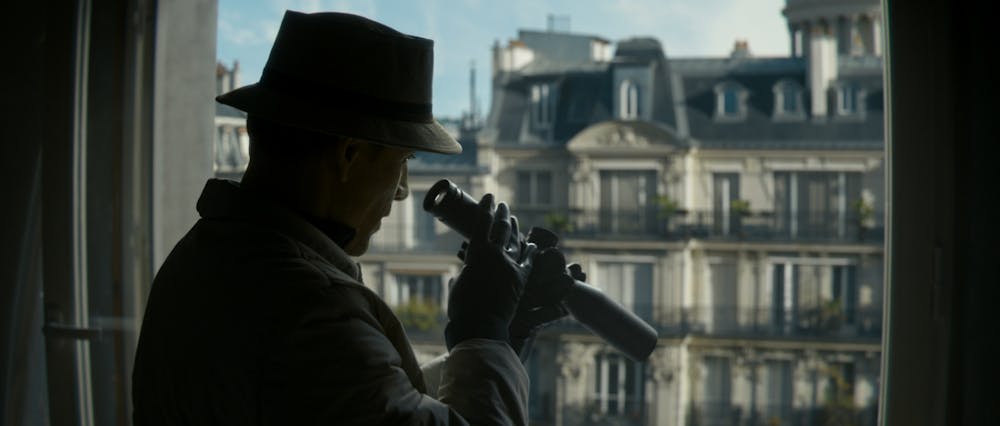I still remember how I felt when I first saw the 1995 horror film “Se7en” in my freshman dorm room. From then on, David Fincher was solidified as one of my favorite directors. The more I explored his work, the bigger the fan I became. His yellow and blue lighting, still shots and psychologically thrilling themes make his films some of the most recognizable pieces of art out there.
Fincher’s newest film, “The Killer,” is a gritty and action-packed film following an assassin on his plot for revenge after a job goes wrong. It’s based on a French graphic novel of the same name written by Alexis Nolent. The film is, in a word, precise. Its use of static shots with quick cuts make the film feel exact and fast-paced. This stylistic choice works to emphasize the theme of technology aiding the human race with a lack of delayed gratification.
The aspect that stood out the most was the sound mixing. The main character, the Killer (Michael Fassbender), is a big fan of rock band the Smiths, which makes up most of the soundtrack. All of the music by the Smiths is diegetic, meaning the audience hears what the characters hear.
The way the sound is mixed makes it seem like the viewer is there with the character, especially in moments where we can hear the music playing from his earbuds or in a car as he drives by. It adds another layer to the film, making it feel much more real and tangible.
With the sound mixing, there is also a heavy use of silence in the film. With a lack of dialogue and only small diegetic noises, the danger the Killer faces feels much more palpable. This can especially be seen in the first scene of the movie, where the Killer is preparing to complete a job.
In this scene, there is no noise except his movements, the people on the street below him and the Smiths blaring from his earbuds. I felt like I was in the room, experiencing everything as he did. This level of immersion is unreal and hard to attain without an expert, such as Fincher, present.
Another detail that stood out to me was the use of lens flares within a shot. The only time a lens flare is utilized is when the Killer is anxious or exhausted. These lens flares add a feeling of delirium that continues to establish the tone of the film.
The film seems to pay tribute to the French New Wave, a film movement that began in the 1950s. This movement rejected a strong narrative and brought in complex ideas. “The Killer” is convoluted and intricate. It discusses how technology has made our lives quicker and easier — for better or for worse.
“The Killer” is a social commentary on the concept of convenience and availability in the 21st century, but it’s also a thrilling and enjoyable experience. I highly recommend this film to anyone looking for a psychological thriller that will leave you with much to think about.




